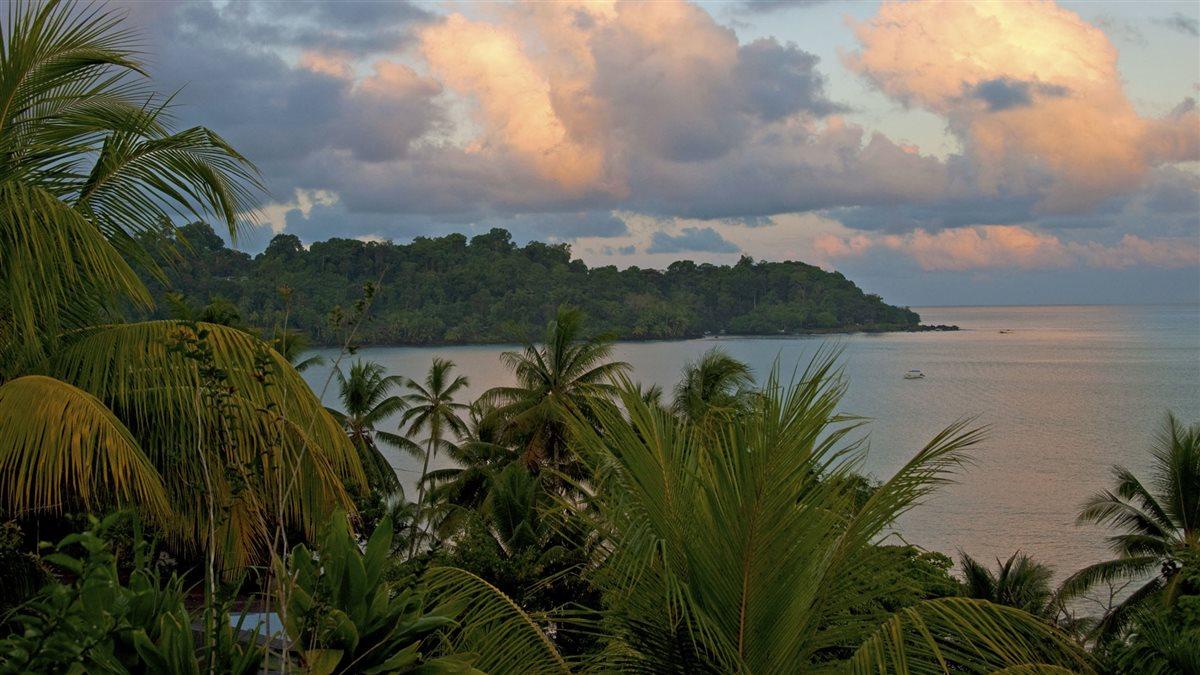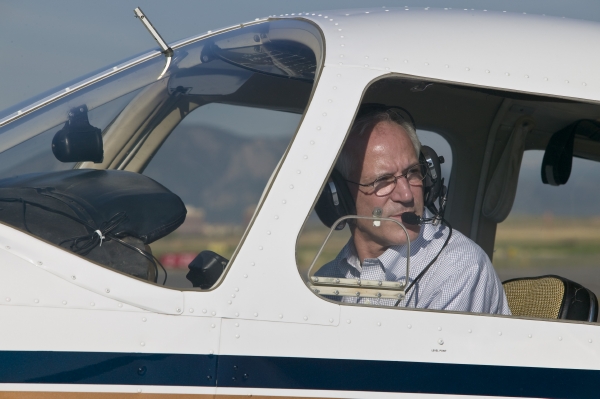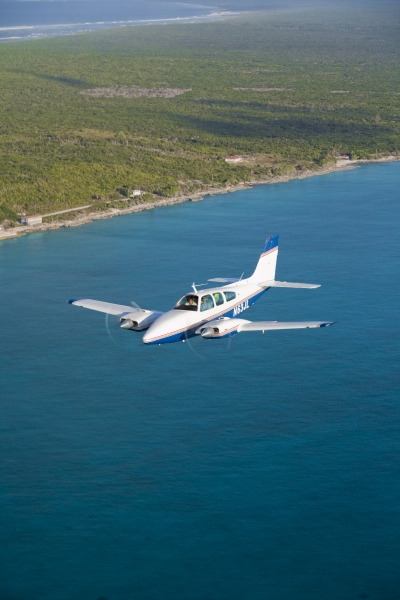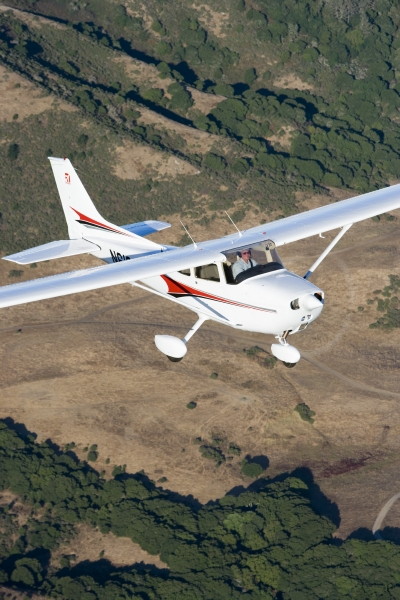Central America

Overview
 The information on these pages pertains to the countries of Central America - Belize, Guatemala, Honduras, El Salvador, Nicaragua, Costa Rica, Panama.
The information on these pages pertains to the countries of Central America - Belize, Guatemala, Honduras, El Salvador, Nicaragua, Costa Rica, Panama.
Each country publishes an “Aeronautical Information Publication” or AIP. Some are online. Some are paper-only. The information in them may not always be accurate..
Multiple federal entities are involved in regulating general aviation in their countries, including: Civil Aviation, Immigration, Customs, Sanitation, Federal Police, and the Military.
International airspace, controlled by the countries or their agencies, is normally divided into “Flight Information Regions” (FIR), based on ICAO regulations and identified by the controlling authority. Some airways are Required Navigation Performance (RNP). Some airways require high frequency (HF) radios.
Most FIR’s are Reduced Vertical Separation Minimum (RVSM). FIR’s can have very different QNE (flight level altimeter setting) and QNH (height above ground, actual altitude) limits. When an airway crosses form one FIR to another there is usually a fix.
Additional airspace definitions within the FIR are Class A, B, C, D, E, F, G. There are also airport and terminal areas, which are divided into: ATZ (like Class D - clearance required); Uncontrolled (self announce your position); TMA/TCA (clearance required).
Charges for airspace usage are based on MTOW/wingspan, distance flown/Great Circle per occurrence. Payment is made via wire transfer rather than in-country. However, if you overfly Mexico on your way to Central America without landing, airspace fees will apply which have to be paid in Mexico. In the case of Belize, Costa Rica, El Salvador, Guatemala and Honduras, their collective airspace is controlled by COCESNA (also known as CENAMER Control) and aircraft below 12,500 lbs are exempt from airspace fees. Panama also charges airspace fees if you overfly them but they are paid at the airport when you land. Users may be blocked from airspace or detained on the ground if fees are unpaid.
You MUST enter and depart a country from an Airport Of Entry (AOE). Call ahead to check days/hours of operations, whether an advance call for immigration/customs is required, whether fuel is available and the method of payment. Also check on airport and other fees, as well as languages spoken.
Many countries have requirements to obtain a Prior Permission Permit to over-fly, land or fly within the country. Check to understand whether there are time limits to your visit or whether a domestic flight requires a different permit. In-country flying can be limited to specific dates, airports and routes. Some countries allow you to obtain an Entry Permit on arrival.
Entry and exits are accompanied by a General Declaration “GenDec” form (Called "Inward" and "Outward") They serve as proof of where you came from. Each country has its own limits on how long an aircraft can remain within its borders.
Parking fees and fuel prices in some countries can be much higher than what pilots may expect and they should verify in advance to make sure that their budgets are realistic for the places they plan to fly to.
Quick tips for flying in Central America:
- Information that is country-specific is posted under "The Countries" tab as AOPA receives it.
- Aircraft repairs outside the U.S. should be made by an FAA certified A&P, but if not possible, work must be checked by the first available FAA Certified A&P.
- Plan for the worst case scenario. Have an alternate airport of entry and check on fuel availability there.
- If you are flying IFR, you must fly airways.
- Check with the State Department for travel warnings and security.
Preparation
Flight Preparation
Pilot-in-Command
The pilot in command must have a current:
- Passport
- Private Pilot or higher Airman Certificate (Pilot License). Sport Pilot certificates are NOT accepted.
- The phrase "English Proficient" on the back of their pilot's license
- Medical certificate - 1st class may be required for turbine. BasicMed not accepted.
- Restricted radio operators permit. For more information on FCC requirements, click here.
- Notarized Letter of Authorization if the aircraft is not registered in the pilot's name
Passengers
- Each passenger must have a current passport.
- Children traveling with only one parent must have a notarized statement of approval from the absent parent stating the dates of the trip.
- Vaccinations
- Pets require special procedures.
- Do not bring firearms, ammunition, or illegal drugs!
- If you plan to leave the U.S. with items of value, contact US CBP for Form 4457.
Aircraft
All U.S. registered aircraft must have:
- A standard Airworthiness Certificate
- A permanent registration certificate (no temporary certificates/pink slips)
- A radio station license. For more information on FCC requirements, click here.
- Operating limitations information
- Weight and Balance information
- An ID data plate
- 12-inch registration marks
- Transponder with Mode C
- Aircraft with fuel tanks installed in the baggage or passenger compartments must have Form 337 on board.
Insurance
Contact your insurance company before you leave the U.S. to be sure you have both destination and overflight coverage. Assured Partners Aerospace will be glad to talk with you about your planned trip. 800/622-2672.
Customs and Border Protection (CBP)
- CBP General Aviation Processing webpage – central CBP resource for GA operations, including
- eAPIS links and instructions
- Border Overflight Exemption (BOE) information
- GA Airport Fact Sheets
- FAQs
- General cross-border operating instructions and expectations
- Direct link to eAPIS
- Direct link to DHS user fee decal information
- Allow a few weeks for delivery. Decals can be purchased online. For decal questions, call (317)-298-1245 or send an email to [email protected].
- All pilots crossing the U.S. border inbound or outbound are required to use Custom and Border Protection's (CBP) Electronic Advance Passenger Information System (eAPIS) to provide crew, passenger(s), aircraft, and trip information. The eAPIS information must be filed at least one hour before departing from or arriving in the United States, but pilots can file as far in advance as they wish, giving the option to provide information for the return trip via Internet before leaving home. eAPIS is not required if you overfly Canada going from one U.S. airport to another without landing.
- All pilots crossing the U.S. border inbound must secure permission to land from their CBP port of arrival, after submitting eAPIS and before departing from their country of origin.
ICAO Flight Plan
-
Use of an ICAO flight plan is currently required if the flight will enter international airspace. While an ICAO flight plan and an FAA flight plan are similar in many ways, there are some important differences. Some items are the same on both forms: aircraft ID or tail number; aircraft type, fuel endurance, and number of people on board. New items on the ICAO flight plan include a Wake Turbulence category, and Type of Flight. The biggest change, though, is found in the equipment suffixes box, box 10. The ICAO codes used to denote the type of equipment on board the aircraft are different than the codes used by the FAA. To find out more, please view this short AOPA video.
Departure
 Departure from U.S.
Departure from U.S.
- Pilots crossing the U.S. border must be in communication with ATC and on a discrete squawk code.
- All aircraft must be on an activated IFR or Defense VFR flight plan for flying through the ADIZ
- All flights must enter and exit at an airport of entry.
- Know the requirements for the countries you plan to visit.
- Have a flight plan, activate the flight plan, then fly the flight plan.
- Make no deviations without ATC approval.
- When VFR, advise FSS once contact is made with foreign ATC.
The Countries
The Countries of Central America
 General Information for all Countries
General Information for all Countries
- Flight between sunset and sunrise is IFR
- VFR and IFR fuel minimums may be different
- The countries typically use the metric system
- Altimeter settings - inches or millibars
- Fuel volume - litres, although gallons are readily converted
- Distances/altitudes - feet/nautical miles
- FAA waivers or regulations are not always recognized
Information and tips specific to each country are posted below as AOPA receives them.
Belize
Be sure to review the entry requirements for Belize on the Belize Department of Civil Aviation's website before your trip.
Guatemala
General Information from Jack McCormick, Baja Bush Pilots
- ICAO code for Guatemala is MGxx
- Of all the Central American countries, I have been to Guatemala the most. The biggest reason would be because of the Aero Club of Guatemala with its friendly and helpful members as well as its great facilities in:
- Guatemala City
- Rio Dulce
- Iztapa
And the places I have enjoyed in Guatemala include:
- Tikal (ruins)
- Copan (ruins) Located in Honduras, airstrip is in Guatemala
- Seibal (ruins)
- Flores
- Catamaran Club (Rio Dulce)
- Rio Dulce
- Copan Located in Honduras, airstrip is in Guatemala
- Chichicastenango
- Antigua
- Sayaxche
- Livingston
For more information, www.bajabushpilots.com
Honduras
General information from Jack McCormick, Baja Bush Pilots
ICAO code for Honduras is MHxx
The East Coast and Bay Islands of Honduras are a special place for me. There always seem to be surprises.... like the time I was curious about Guanaja (MHNJ). I flew out planning to do lunch and ended up staying three nights at a funky little hotel on the water.
And then there was the time I put on fuel at La Ceiba. That night at my hotel, I got a call from the front desk who indicated that the fuel man was at the desk and was indicating that he had made a mistake on my fuel charges. When I went down, he indicated he had US$35 dollars that he wanted to give back to me as he had made a mistake and overcharged me.
And, one more surprise, I landed late at La Ceiba one evening and flight service told me that Immigration and Customs had all gone home. He indicated that all that Immigration stuff could be taken care of when I was leaving so, I filled out my flight plan and Flight Service gave me a ride to my hotel. Two days later when I was leaving, no problem....
And the places I have enjoyed in Honduras include:
- Guanaja
- La Ceiba
- Copan
- Roatan
- Utila
- San Pedro Sula
And, for a special treat, spend several nights at Pico Bonito near La Ceiba. And no, I have never had a reason to go to Tegucigalpa, the capital of Honduras.
For more information, www.bajabushpilots.com
El Salvador
General information from Jack McCormick, Baja Bush Pilots
ICAO code for El Salvador is MSxx
El Salvador is one of the few countries in Central America that allows technical stops i.e. as long as you don't leave the airport property, there is a minimum of paperwork and little dollars involved. Private aircraft use MSSS and scheduled commercial traffic use MSLP.
Regarding MSSS, this is the place to be to talk to other pilots from both El Salvador as well as pilots from other Central America countries who are working charter flights. Called Illpango, this airport is home to the Salvadoran Flying Club.
Located just across from the Flight Service, the Club has a restaurant, meeting area to hang. They do breakfast, lunch, and dinner. The food is great, the ambiance is great, and the ice cream bars are cold. It is much like the club in Guatemala, a home away from home. And if you are a pilot, you are welcome there.
For more information, www.bajabushpilots.com
Nicaragua
General Information from Jack McCormick, Baja Bush Pilots
Managua Nicaragua (MNMG)
General Information
ICAO code for Nicaragua is MNxx.
Welcome to Central America. You will know you are there the minute you walk into the airport at Managua. I say Managua (MNMG) as it is the only international airport for the entire country. And it is busy. People, buses, taxis, and more are all going full bore in every direction.
I love the place…. There is a lot of adrenalin pumping there.
I have not stayed in Managua in the five or six times I have landed there but have always grabbed a taxi and gone down to Granada, one of the oldest and most interesting cities in all of Central America. There, as you sit on the veranda of the Hotel Alhambra located on the side of the main square, you will have visions of what the Americas were all about 50+ years ago. Got to quit talking about it or I will be headed south. Granada is located on the banks of Lake Nicaragua, home of the only fresh water shark in the world. And transportation around the city is via bus, taxi or, horse/donkey-drawn carriage. No, the carriages are not for tourists but are a regular means of transportation within the city.
Want to go to one of the biggest open air markets in Central America?..... a short taxi ride will get you to Masaya. There is nothing that you cannot find or buy there.
Managua is easy to enter but can be a real experience to depart. As you are using the same building and offices as the commerical scheduled flights, you will do a lot of "office jumping."
As a side point, in 2006, the DGAC was replaced by the Instituto Nicaraguense de Aeronautica Civil. (INAC) The INAC takes control of the airports, etc. away from the Ministry of Transportation. Funding for INAC is now from profits generated by the Nicaragua airport(s) and services.
Since then, we have found that there is no avgas in Managua and it looks like there are no plans to have it in the near future. And, as I have been told, the flight club is all but gone and there is little private aviation by Nicaraguan pilots in Nicaragua. The lack of fuel really makes it tough if you want to fly local, i.e.: go out to Corn Island off the west coast. I understand that there is fuel in Las Brasiles but that is a National airport just north of Managua. And you must get permission from the government to land there.
And the government has canceled all the ground handler licenses and INCA is now providing the handling services
And, all other International airports have been closed....
Managua is the only place to check in and out of the country.
So, when landing Managua, you will be directed to park at the far end of the ramp. Tower will contact INCA who will send a van to pick you up and take you to the arrival area of the terminal. There you will go through Immigration and Customs. However, as you are a private flight, you will be directed toward a "special door" behind immigration which will take you down a short hall and into the General Concourse. This is the VIP entrance and departure "gate." When you depart, it is the same drill. Go to the VIP hall and into the arrival area. Security will call for a van to take you to your aircraft.
For more information, www.bajabushpilots.com
Costa Rica
General Information from Rick Gardner, CST Flight Services
We have received official notification that Costa Rica is implementing their own APIS system. At this time, it is in a trial phase and only applies to the Juan Santamaria International Airport in San Jose, Costa Rica (MROC). However, we have been told that the plan is to roll it out to the other international airports as well (MRPV, MRLB, MRLM) over the coming months. Unfortunately, the Advisory Circular we have received leaves many questions unanswered and we have requested additional details. Presently, ALL flights going to MROC MUST use a Ground Handler so the handling company you use at MROC should take care of filing the APIS for you. We have requested additional details on availability of a public portal, timing requirements etc. At this moment, it will not affect most light General Aviation aircraft and we have been told (unofficially) that no fines will be issued during the trial phase for failing to comply.
For more information, click here.
General Information from Jack McCormick, Baja Bush Pilots
ICAO code for airports in Costa Rica is MRxx
Costa Rica, the land of beaches, volcanoes, jungle, and more. I stop in Costa Rica almost every time I travel through Central America. And I have my favorites; the best for me is flying into Pavas (MRPV) located downtown San Jose. And there, my favorite hotel is the Grand Costa Rica. Over the past 12 years, I have seen many changes including the Hotel Grand which is now "the place to be" when staying downtown.
More favorites include Monteverde in the northern highlands, Tortuguero on the east coast, Quepos on the Pacific, and more. Costa Rica has set up a network of paved, 3,300 foot runways throughout their country that scream at you to come and land. Costa Rica, a place that you could spend a day, a week, a month, or more. And, this is where I did my Spanish immersion class.... Memories that last forever.
And, Costa Rica has many giant rocks (volcanoes) that stick up through the clouds. If you cannot see there, don't go there....
Parking fees in Costa Rica
We have confirmed that Costa Rica has implemented new parking fees as follows.
It must be pointed out that these fees are for any aircraft be it a Cessna 152 or a Boeing 737, foreign or national. Landing fees remain about the same and are computed by the ton.
We are writing a letter of protest to the Government of Costa Rica regarding this issue.
- Liberia, MRLB
- First 90 minutes, free
- From 6 AM to 6 PM, US$9.64 per hour
- From 6 PM to 6 AM, US$4.82 per hour
- Pavis, MRPV
- First 90 minutes, free
- From 6 AM to 6 PM, US$12.70 per hour
- From 6 PM to 6 AM, US$6.35 per hour
- Limon, MRLM
- First 90 minutes, free
- From 6 AM to 6 PM, US$12.70 per hour
- From 6 PM to 6 AM, US$6.35 per hour
(Note, all of the above is subject to change without notice)
Using MRPV as an example:
Landing just for fuel for less than 90 minutes, no charge (still have to check in with Immigration, etc)
Landing just for fuel and it takes 2 hours, US$12.60,
Landing at noon and departing at noon the following day: US$113.40. (6x6.30+12x3.15+6x6.30=113.40)
For more information, www.bajabushpilots.com
Panama
General Information from Jack McCormick, Baja Bush Pilots
ICAO code for airports in Panama is MPxx
Panama is a must when in Central America. At the very bottom of Central America, it is one of the highest places on my "bucket list." The country is lush in color, the people are friendly, travel is easy, and you can fly from the Pacific to the Atlantic (Caribbean) ocean in about 15 minutes. And when flying from the Pacific to the Atlantic along the canal, your compass will show you headed west (think about it). Places and things that are a must is lunch at the Miraflores Locks, a partial transit of the Canal, the Rainforest / Gamboa Tower tour and a visit to the old city which can all be done from Panama City. And then, on the Atlantic side, there are the San Blas Islands. Be sure you sharpen your short field landing skills as most of the strips out there are between 1,500 and 1,700 feet long. But, most start and end right on the ocean, so you don't have to worry about that 50' obstacle on departure.
And on the Pacific side you have Island Contadora. This jewel of an island is where the silver was counted before being shipped on to Spain, England, or who ever owned the Island at the time. There are several hotels there, one a large "all inclusive hotel" and the other a small boutique hotel, both located within walking distance from the parking area (do the little one, much more ambiance). And, when there, rent a quad for an hour.... The island is a circle and you will do the whole island and get back with time to spare.
And I have saved the best for Boca del Toro (Bocas Town). On Bocas, time is still standing still. Let’s see, they did pave Front Street and they have built several more hotels but it is what life on the Caribbean is all about. When I first went there 12 years ago, people walked slowly with smiles on their faces. Now, when I visit Bocas Town, I walk slowly with a big smile on my face.
For more information, www.bajabushpilots.com
Return
 Returning to the U.S.
Returning to the U.S.
- Plan your route
- Select Foreign and U.S. AOE’s
- Determine route, ETA, FIR boundary and ADIZ times
- File eAPIS (if you filed eAPIS reports for both legs of your trip before you left the U.S., you do not have to file again).
- Call FSS in the U.S.
- Briefing
- Provide Flight Plan information (VFR)
- Call CBP at least one hour and no more than 23 hours before your planned U.S. arrival time. (Do not rely only on ADCUS – call to verify CBP has your flight plan).
- Get a name, badge number or initials
- File ICAO Flight Plan
- Present OUTWARD General Declaration
- Surrender aircraft permit documents
- Surrender immigration cards
- Pay applicable departure, airport and NAV fees
- File an activated IFR or Defense VFR flight plan for flying through the ADIZ with ADCUS (advise customs) in the remarks section.
If you are arriving in southern Florida, plan to land at one of the following eight U.S. CBP airports of entry after crossing the U.S. border. Be on time – a little late is better than early.
-
- Key West International Airport, (KEYW)
- Tamiami Airport, Miami (KTMB)
- Miami International Airport General Aviation Center (KMIA)
- Opa Locka Airport, Miami (KOPF)
- Fort Lauderdale Executive Airport (KFXE)
- Fort Lauderdale Hollywood International-General Aviation Facility (KFLL)
- Palm Beach International Airport, West Palm Beach (KPBI)
- Saint Lucie County Airport, Fort Pierce (KFPR)
Resources
- Bahamas and Caribbean Pilot's Guide
- Digital Charts- Available for download with CST Flight Services membership
- Purchase Charts from Bush Pilots International (BBP)
- International Information from FAA
- Information on the Zika Virus
- Bringing your dog back to the United States

Third-party companies
- CST Flight Services
Proud Partner of AOPA
CST Flight Services offers international permits, overflight permits, border overflight exemptions, ground handling, and guided expeditions
US (786) 206-6147
Mex +52 222-912-6250
eMail: [email protected] - Air Journey
Guided Flying Trips, Concierge Services & Personalized Flight Support11382 Prosperity Farms Road, Suite 222Palm Beach Gardens, Florida 33410Tel. (561) 841-1551
Cell. (561) 452-1225
eMail: [email protected] or [email protected] - Cuba Handling
Cuban Aviation & Travel Planning
Eric Norber, President
Office: 844-JET-CUBA
Cell: 1-407-619-0022
Cuba: 53-58695166
eMail: [email protected] - FlashPass. FlashPass is an app that streamlines submitting eAPIS manifests to U.S. CBP, as well as APIS manifests to Mexico. A subscription is required.
- International Air Rally
Catherine Tobenas, Managing Director,
Aviation Connection Event Coordinator
USA office: 1-800-709-3209
Canada office: 1-450-969-2247
eMail: [email protected]